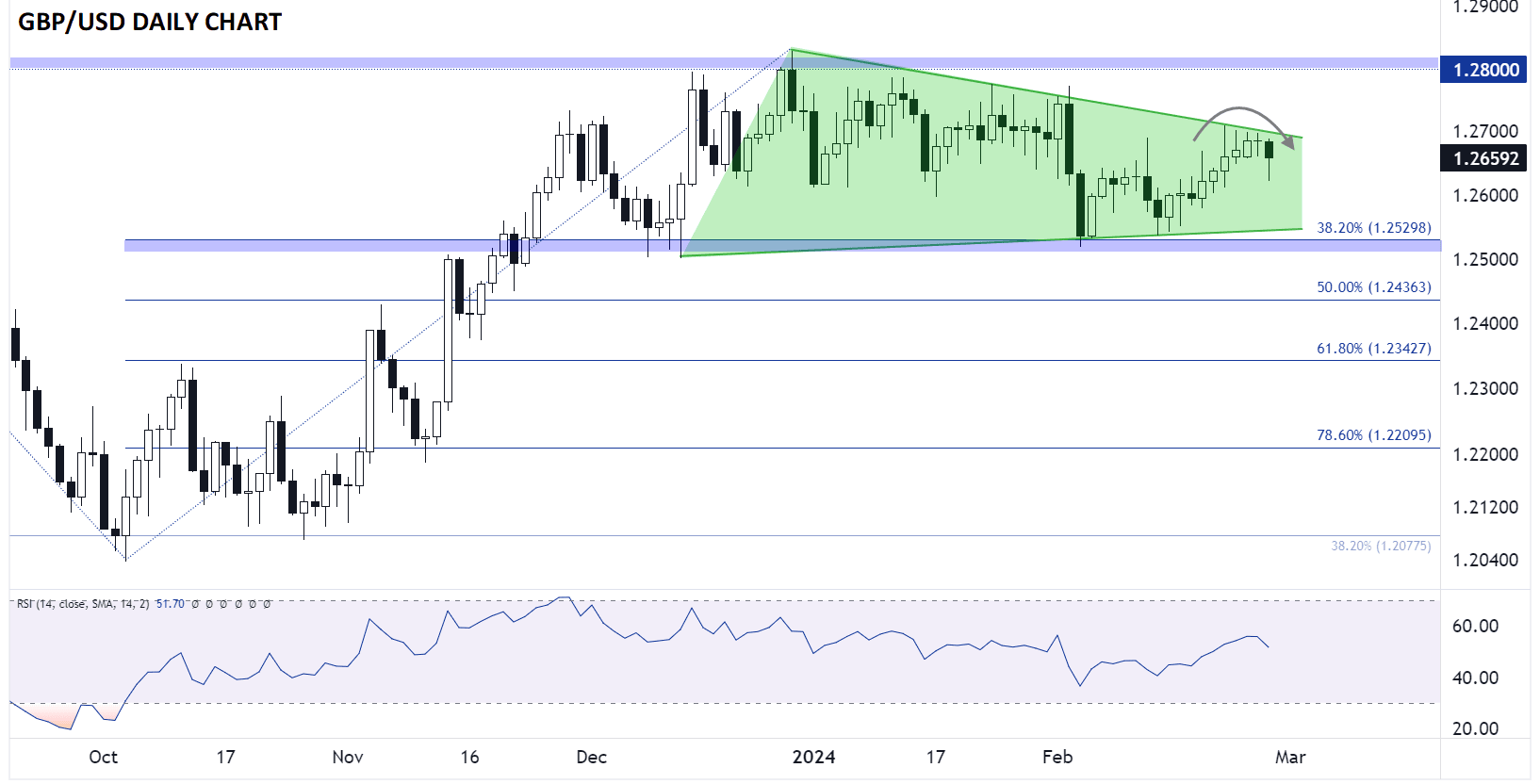GBP/USD Rate Week Ahead Forecast: Rolling Over, U.S. Jobs Report Will Be Pivotal
- Written by: Gary Howes
- GBP/USD rolling over within range
- UK budget in focus on Wednesday
- Friday's U.S. jobs report will be pivotal

Image © Adobe Images
Pound Sterling has held up better against the dollar than most in 2024, but this resilience will be tested on Friday when a crucial U.S. jobs report is released.
Pound Sterling Live reported on Friday that a major U.S. asset manager has said it now expects no interest rate cuts from the Federal Reserve in 2024, which, if proven correct, would pose significantly bearish tones for Pound-Dollar.
The argument made by Apollo Global Management is that the U.S. economy is reaccelerating, and inflation is pointing higher again, meaning the Fed won't be able to cut interest rates.
Markets have already shaved expectations from six to three rate cuts in 2024, and this repricing will extend on another blow-out U.S. jobs report on Friday. The risk is that the market wakes up to Apollo's viewpoint following another hot data reading, and panic ensues.
The market expects a non-payroll reading of 190K, and we look for the USD to rally if the data comes in hot. Equally, look for Pound-Dollar to return towards the top-end of the three-month range if the data undershoots.
GBP to USD Transfer Savings Calculator
How much are you sending from pounds to dollars?
Your potential USD savings on this GBP transfer:
$318
By using specialist providers vs high street banks
The Pound-Dollar exchange rate, like other Dollar pairs, has been more or less treading water as investors await the next set of labour market and inflation reports.
According to Shaun Osborne, Chief FX Strategist at Scotiabank, short-term trend momentum is leaning bearish, but there are signs of firm support on dips to the low 1.26s on the intraday chart.
More broadly, the pair has been contained to the 300-pip range between 1.25 and 1.28 since November, and no imminent breakout from this range looks likely.
Matthew Weller, Global Head of Research at Forex.com, says although GBP/USD remains enveloped in a sideways trend, near-term action could favour a return to the bottom of the range.
Image courtesy of Forex.com. Track GBP/USD with your own custom rate alerts. Set Up Here
"Zooming in, GBP/USD may be rolling over," says Weller. "Traders interested in capitalising on short-term moves may want to consider sell trades with a stop above last week’s highs targeting a potential drop toward the February lows in the mid-1.2500s."
Alternatively, he says, a confirmed break above 1.2710 resistance could lead to a quick continuation toward the year-to-date highs in the 1.2800 range.
"Any trading strategy has periods in which it thrives and periods in which it underperforms. As it stands, the rangebound trading strategy remains the best way to approach GBP/USD unless/until we see a meaningful breakout from the 3+ month range," says Weller.
Should U.S. non-farm payroll figures comfortably beat expectations, we would be on alert for the Pound-Dollar to eye a test of the bottom of the range.
Pound Sterling is in focus on Wednesday owing to the UK spring budget announcement, the last before this year's election.
We reported recently that if Chancellor Jeremy Hunt gets the March 06 budget wrong, the Pound could fall by as much as 2%, but analysts say the Pound would find some positives if a credible fiscal easing is announced.
Furthermore, any efforts to boost UK productivity, such as business investment tax breaks, can also result in a stronger Pound.
The big risk for the Pound is if the Chancellor announces big tax cuts deemed unaffordable by bond market players, as was the case with Liz Truss' botched budget of September 2022.
ING estimates a 40 basis point risk premium in 10-year gilt yields, "suggesting markets aren't totally immune to UK fiscal risk".
"Were Chancellor Hunt to misread the mood of gilt investors and cause another upset, sterling would again come under pressure," says Chris Turner, Global Head of Markets at ING. "Short-term models suggest a 2% sell-off in sterling could happen quite easily were investors again to demand a risk premium of sterling asset markets."





